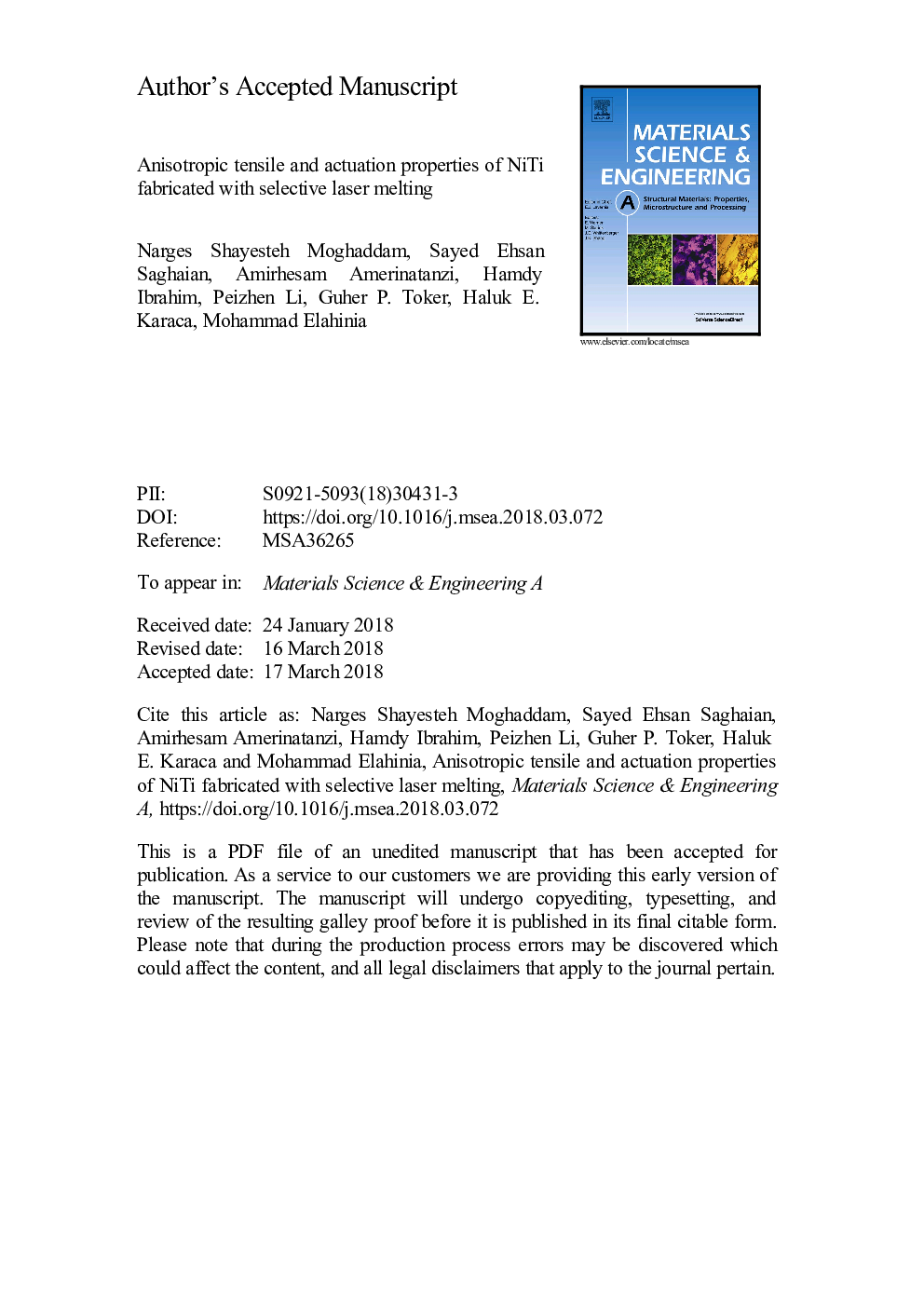| Article ID | Journal | Published Year | Pages | File Type |
|---|---|---|---|---|
| 7972479 | Materials Science and Engineering: A | 2018 | 27 Pages |
Abstract
This study evaluates the anisotropic tensile properties of Ni50.1Ti49.9 (in at%) components fabricated using an additive manufacturing (AM) process of selective laser melting (SLM). Dog-bone shaped tensile specimens were fabricated in three orthogonal building orientations (i.e., horizontal, edge, and vertical) with two different scanning strategies (i.e., alternating x/y and alternating in ±â¯45° to the x-axis). Next, the samples were subjected to tensile testing until failure, shape memory effect tests and thermal cycling under constant tensile stresses up to 500â¯MPa. Their failure surfaces were analyzed for possible microstructural defects. It was revealed that the build orientation and scanning strategy affect the texture/microstructure, and hence the failure stress, ductility, shape memory effect, and functional stability. Samples fabricated in the horizontal orientation with alternating x/y scanning strategy had the highest ultimate tensile strength (606â¯MPa) and elongation (6.8%) with the strain recovery of 3.54% after 4 shape memory effect cycles. At stress levels less than or equal to 200â¯MPa, these samples had the actuation strain greater than 3.8% without accumulation of noticeable residual strain. It was observed that the scanning strategy of alternating in ±â¯45° result in degraded mechanical and shape memory response, particularly in horizontal and edge samples.
Related Topics
Physical Sciences and Engineering
Materials Science
Materials Science (General)
Authors
Narges Shayesteh Moghaddam, Sayed Ehsan Saghaian, Amirhesam Amerinatanzi, Hamdy Ibrahim, Peizhen Li, Guher P. Toker, Haluk E. Karaca, Mohammad Elahinia,
